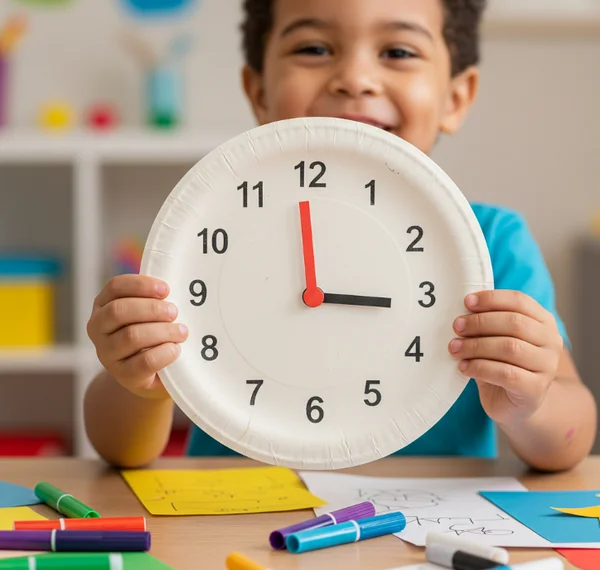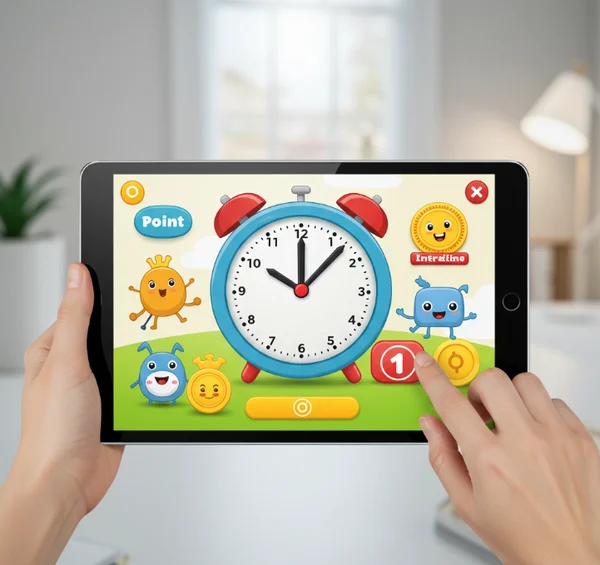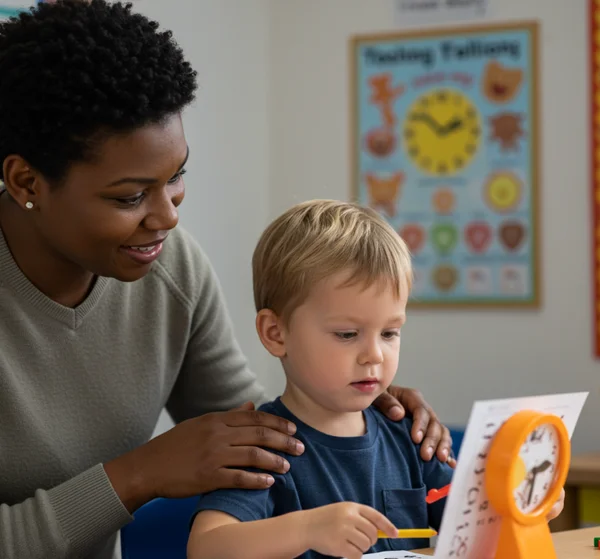Fun Clock Games & Activities to Teach Kids Telling Time
Make Learning Time Fun: Engaging Clock Games and Telling Time Activities for Children
Teaching kids to tell time can sometimes feel like a race against, well, time! Traditional methods can be a bit dry, and keeping young learners engaged is key. How can I make learning time fun? The answer is simple: turn it into a clock game! This guide is packed with fun telling time games for kids and creative activities for teaching time, perfect for parents and educators. Let's explore how using a learning clock or a simple teaching clock can become an exciting adventure. Understanding time involves various cognitive skills, and for children who find these numerical concepts particularly challenging, it can be helpful to explore resources that assess these underlying abilities, such as an assessment for dyscalculia traits.
Why Make Telling Time a Game? The Benefits of Playful Learning
What are the benefits of clock games? When children are playing, they're often more motivated, focused, and open to learning.
Increasing Engagement and Motivation
A game for time transforms a potentially tedious task into an enjoyable challenge. Kids are naturally drawn to play, making them more likely to participate actively and absorb new information.
Reinforcing Concepts Through Repetition and Fun
Many time games involve repetition – seeing the clock, saying the time, matching times – which is crucial for mastery. When this repetition is wrapped in fun, it doesn't feel like a chore. This makes clock learning more effective.
Developing Problem-Solving Skills with a Game for Time
Some educational clock games require children to think critically, match patterns, or solve simple time-related puzzles, subtly enhancing their problem-solving abilities.
Awesome DIY Clock Games and Hands-On Telling Time Activities

Ready to get creative? Here are some fantastic DIY clock games for kids and hands-on telling time activities you can easily set up.
Craft Your Own Paper Plate Learning Clock
How can I make a homemade teaching clock? A paper plate clock is a classic for a reason!
- Materials Needed: A paper plate, a paper fastener (brad), two strips of cardstock (one shorter for the hour hand, one longer for the minute hand), and a marker.
- Step-by-Step Instructions:
- Write numbers 1-12 around the edge of the paper plate, just like a real clock.
- Cut out an hour hand and a minute hand from the cardstock. Make the hour hand shorter and wider, and the minute hand longer and thinner.
- Use the paper fastener to attach the hands to the center of the plate, ensuring they can move freely.
- You now have a fantastic DIY clock! Use it to call out times and have your child set the hands, or set the hands and have them tell you the time.
Human Clock: A Kinesthetic Game for Time Telling
This active game for time gets kids moving!
- How to Play: You need a large open space. One child can be the "center" of the clock. Two other children can be the "hour hand" and "minute hand" (give them different colored sashes or signs). Call out a time, and the "hands" have to position themselves correctly.
- Variations for Different Skill Levels: For younger kids, start with o'clock times. For older kids, introduce half-past, quarter-past, and specific minutes.
Time Bingo: A Classic Game with a Clock Twist
Are there activities for teaching telling time in groups? Time Bingo is perfect!
- Creating Your Bingo Cards: Create bingo cards with different analog clock faces showing various times (or digital times, and players match to an analog clock).
- Gameplay and Winning: Call out a time (e.g., "Half past two" or "Show me 4:45"). Players cover the corresponding clock on their card. The first to get a line or full house wins! This is a great telling time game for kids.
"What Time Is It, Mr. Wolf?" - A Playground Favorite Adapted
This traditional game can be easily adapted for clock learning.
- Rules for a Time-Telling Version: One child is "Mr./Ms. Wolf" and stands with their back to the others. The other children chant, "What time is it, Mr./Ms. Wolf?" Mr./Ms. Wolf calls out a time (e.g., "It's 3 o'clock!"). The children take that many steps forward (3 steps). If Mr./Ms. Wolf calls out "Dinnertime!" they turn and chase the others back to the starting line.
Daily Schedule Matching with a Teaching Clock
Use a child's learning clock or your DIY clock for this activity.
- Using a Child's Learning Clock for Routine: Write down key daily activities (e.g., breakfast, school, playtime, bedtime) and the times they happen. Have your child set the teaching clock to match the time of each activity. This helps them connect time to real-life events.
Top Online Clock Games and Interactive Tools for Kids

What online games help teach time? The digital world offers many engaging resources.
Engaging Websites with Free Telling Time Games
Many educational websites offer free online time games. Look for sites that feature clear graphics, simple instructions, and various difficulty levels. These educational clock games often make learning feel like play.
Best Apps for Learning to Tell Time on a Clock
Several apps are designed specifically for telling time games for kids. These often include interactive elements, rewards, and progress tracking, making them a great learning clock tool.
Using an Interactive Clock for Practice and Quizzes
An interactive clock online is an invaluable tool. Children can move the hands, see the digital time change, or be quizzed on setting specific times. This type of interactive clock for learning provides immediate feedback.
Tips for Choosing the Right Clock Game or Activity
With so many options, how do you pick the best clock clock game?
Consider Your Child's Age and Learning Style
A game that's too simple will be boring, while one that's too complex will be frustrating. Choose activities for teaching time that match your child's current understanding and preferred way of learning (visual, auditory, kinesthetic).
Focus on Making it a Positive and Encouraging Experience
The goal is to build confidence. Offer plenty of praise and keep the atmosphere light and fun.
Start Simple and Gradually Increase Difficulty
Begin with o'clock times, then move to half-past, quarter-past, and finally to telling time to the minute. This gradual approach prevents overwhelm.
When Learning Time Takes Longer: Supporting Your Child

My child struggles with telling time, what can I do? It's common for some children to take longer to grasp time concepts, as it involves understanding numerical sequences, spatial relationships, and abstract ideas.
Common Challenges in Learning to Tell Time
Challenges might include differentiating between the hour and minute hands, understanding the 60-minute cycle, or relating analog positions to digital numbers. These skills are closely tied to overall number sense and mathematical thinking.
Strategies for Extra Support at Home or School
Be patient, provide lots of varied practice (using different time games and tools), and break down the concept into smaller steps. Consistent, positive reinforcement is key. Connect telling time to real-world routines and events.
Understanding When to Seek Further Assessment for Learning Difficulties
If, despite consistent effort, varied teaching methods, and engaging clock games, a child continues to struggle significantly with telling time and related numerical concepts (like counting, sequencing, or basic math), it might be helpful to explore if there are underlying learning differences. Difficulties in these areas can sometimes be indicators of conditions like dyscalculia, which specifically affects mathematical learning. Understanding these patterns is crucial for providing the right support. For parents and educators seeking to understand if a child's challenges with time and numbers might be linked to dyscalculia, an initial dyscalculia risk screening can offer valuable insights.
Make Every Minute of Learning Time Count with Fun!
Teaching children to tell time doesn't have to be a chore. By incorporating these fun clock games and telling time activities for kids, you can transform learning into an engaging and rewarding experience. Remember, the most effective teaching clock is one that sparks joy and curiosity! However, if you notice persistent difficulties that games alone don't resolve, it's important to consider other factors that might be at play in their learning journey.
What are your favorite clock games for teaching time? Share your ideas and successes in the comments below!
Frequently Asked Questions about Clock Games for Kids
At what age should kids start learning to tell time with games?
Most children can start learning basic time concepts (like o'clock) around ages 5-6, often in kindergarten or first grade. Clock games can be introduced at this stage, tailored to their developmental level.
What are some very simple clock games for preschoolers?
For preschoolers, focus on identifying the numbers on a clock, understanding "before" and "after" related to daily routines, and simple matching games with a child's learning clock showing o'clock times. The Human Clock game (simplified) can also be fun.
How can I make a homemade teaching clock?
The paper plate clock described earlier is a fantastic and easy homemade teaching clock. You can also use large cardboard cutouts for a more durable version.
My child is struggling with telling time even with games, what should I do?
First, ensure you've tried various approaches and games, and allow for plenty of patient practice. If the struggle is significant and persistent across different time-related tasks and possibly other number-based concepts (like understanding quantities or number sequences), it might be beneficial to consider a deeper look into their learning profile. Difficulties in these areas are sometimes associated with learning differences such as dyscalculia. Understanding if this could be a factor is important for finding targeted support strategies. Exploring an online resource designed to evaluate dyscalculia indicators could be a helpful first step for parents and educators seeking more information.